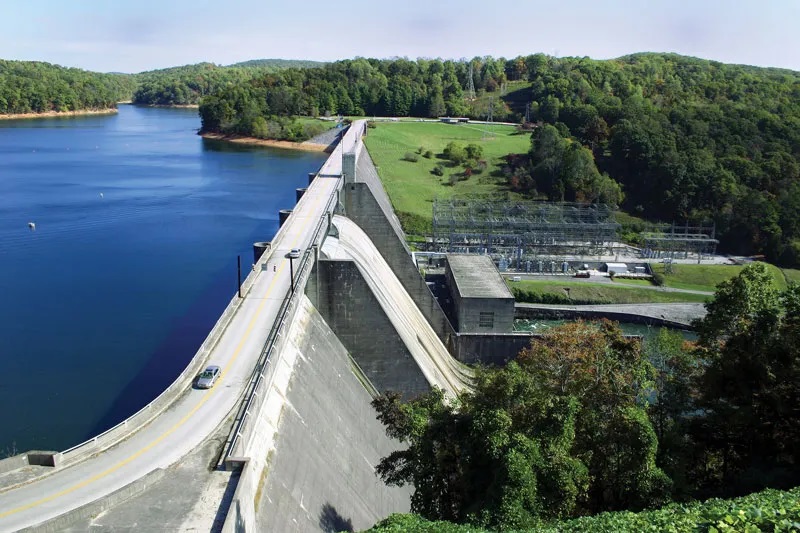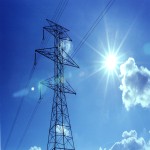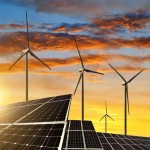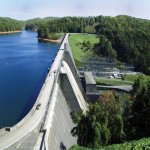Hydropower, which first came to life in the 19th century, is the oldest of the renewable sources and is far and away the most important in quantitative terms: as the International Renewable Energy Agency (IRENA) points out, its installed capacity is the equivalent of all the other renewable sources added together.
It’s an energy source that makes an important contribution to combating climate change because it avoids the use of fossil fuels and reduces emissions of carbon dioxide, climate-altering gases and particulate matter, thereby counteracting pollution and the greenhouse effect.
As with other green sources, the benefits tend to increase over time, as performance and efficiency improve, as does the recycling of materials, thereby reducing both costs and the environmental impact. Some characteristics mean, however, that water power stands out from other renewables. Here are 10 advantages that explain why hydropower plays a major role in the world's energy balance.
1. It is clean and sustainable
Hydropower is a clean source because it generates electricity without emitting greenhouse gases or other pollutants: it helps decrease fossil fuel consumption, thereby reducing air pollution and mitigating climate change.
And it provides renewable energy that is unlimited in time. This is because its sources, namely rivers and streams fed by the natural water cycle, are renewed. Furthermore, a hydropower plant does not take water away from the environment. That’s because whatever is removed is completely given back over time: its water footprint is therefore low.
It is also a resource that’s available in a great many countries, which can thus produce energy in a more self-sufficient and sustainable way, thereby reducing the need to import raw materials.
2. It is a very flexible resource
Faced with water availability that can vary over time, power plants are extremely flexible. Generating systems require a very small amount of energy in order to come on line, so much so that in a matter of minutes even a large plant can go from being idle to full power, and vice versa. This responsiveness depends on the type of turbine used and the management of water flows.
3. It stabilizes the power grid by preventing intermittency
A pumped storage hydropower plant acts as an energy store: excess electricity generated by wind or solar plants when weather conditions are favorable can be used to pump water into the upper reservoir. Later, when there is no sun or wind, the water can be used in order to generate electricity through turbines. In this way, the hydropower plant has a stabilizing effect on the power grid.
4. It reduces the risk of flooding
A hydropower plant not only generates electricity, but it also interacts with the area in which it is located by contributing to its development.
First and foremost, it brings a clear benefit to the environment: the amount of water that is released (after generating power) can be controlled over time and with great precision, both in terms of flow rate and total volume. This means being able to regulate the flow continuously, thus greatly reducing the risk of flooding during heavy rains, which also benefits crops in irrigated areas downstream.
5. It helps reclaim marshy areas
Hydropower plants help improve the health of waterways: on the one hand, the regularization of flows can help reclaim marshy areas by reducing the accumulation of standing water; on the other, the plant's infrastructure retains branches, trees and other solid objects, thus facilitating the navigability of rivers downstream.
6. It enhances tourist areas and water sports
Pedestrian paths are created around a reservoir, for operational purposes, and these can also be made available for tourist use. Where possible, bicycle paths can be set up around dams, and this also enhances areas that often feature beautiful scenery.
Moreover, a river that has become cleaner thanks to a hydropower plant is also a resource for fishing and water sports such as rafting or boating. Fishing is also an important economic activity for many communities, and in this sense the presence of a reservoir can be a significant asset.
7. It protects biodiversity
The presence of large bodies of water in reservoirs encourages the growth of vegetation, which in turn attracts animals: thus hydropower plants often become spaces for the preservation of biodiversity. With this in mind, channels and passage ramps are often built alongside dams and weirs, thereby allowing fish to swim upstream or downstream.
8. Water carries huge amounts of energy
The energy potential of hydropower is enormous. Indeed, the gigantic masses of water found at high altitudes are endowed with a considerable amount of gravitational potential energy, and harnessing even a portion of it means having plenty of energy at your disposal. Suffice to say that all the world's largest power generation plants are hydroelectric, and it can take only one plant to meet the energy needs of millions of people.
9. It is the cheapest source
Although the initial investment in setting up a plant is challenging and costly, overall, water power is the least expensive energy source in the medium and long term. Once the dams have been created, the power plants built and the turbines installed, the maintenance required is minimal compared to the initial investment. And with the increasing digitalization of power plants, there are greater efficiencies and additional benefits, such as reduced waste.
10. It lies at the heart of continuous innovation
New technologies are making increasingly efficient machinery available to hydropower. Thus, the modernization of plants is improving installed capacity and electricity production: this is through the practice of repowering, thanks to which the energy sector's greenhouse gas emissions are being decreased further still.
Technology is also playing a leading role in power plant maintenance –and ensuring maximum safety.
And digitalization in particular is opening up the most advanced scenarios: continuous monitoring relies on wireless sensors, statistical analysis, and predictive maintenance, while inspections are becoming increasingly efficient with the use of robots, drones, and satellite systems (such as GPS) to detect even minor anomalies. These enable preventive interventions with the greatest possible safety and efficiency.







